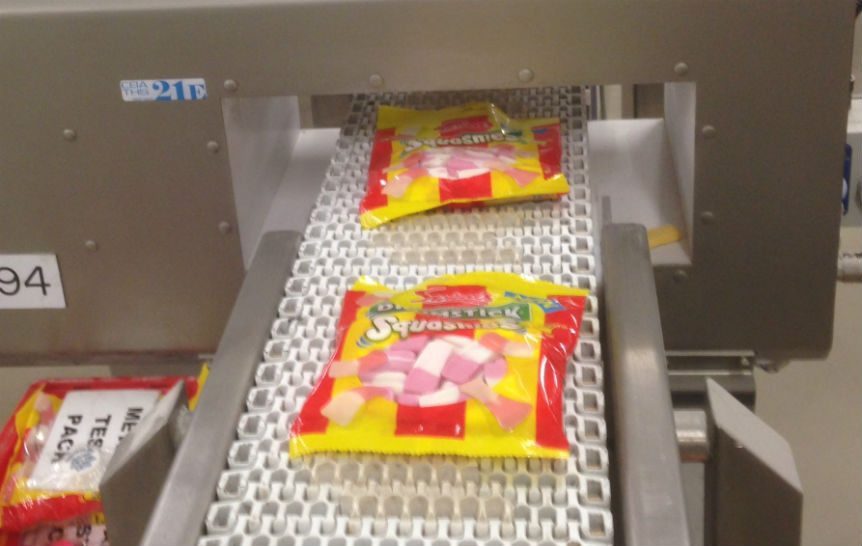Supermarkets “Codes of Practice” impose stringent rules on their suppliers’ food metal detectors as they seek to protect both their customers and their own brand from any harm.
With the wide variety of ready meals, snacks and processed foods on offer, this pressure increases the need for flexibility on production lines as they switch from one product to the next. Packaging innovations and new materials also increase the complexity of the task for contaminant detection equipment.
Every food product has its own “Product Signal” representing how the product itself appears to any metal detector. These signals will vary tremendously; a wet product will have a “big” and very noticeable signal, dry powders will exhibit a “bulk effect” signal, particularly when inspected in large quantities such as 25 kg sacks.
If a product is already packed when it passes the detector, then the packaging will also add to the product’s signal profile, with inert plastic presenting minimal or no signal and metallised film having a very large footprint.
Traditional metal detectors can be accurately tuned to identify each product’s signal together with its packaging and they will then reject any products passing through that have a different profile to the signal they are tuned to recognise as “good” product. Hence finding a non-matching signal leads to product rejection as it is identified as a contaminant.
But What About Product Variations?
Production lines are not constant environments, so if the product’s signal changes due to changes in moisture levels, or temperature variations for example, then the detector may start to reject an increasingly large amount of perfectly good product due to “false positives”.
And if production requirements mean a new product must be produced on the same line, a product re-learn, and programming of new settings will require down time on the production line and increased costs.
The Need for Flexible Food Metal Detectors
CEIA’s Multispectrum detectors overcome the “Product Signal” issue because they operate over multiple frequencies at the same time, and are therefore flexible and capable of cancelling out a much wider range of product signals without recalibration.
This means no downtime between changes in the product on the line and no “false positives” due to environmental changes.
In addition to these benefits, their higher sensitivity increases their accuracy for the same product signal, allowing them to detect much smaller contaminants. Typically, if a regular detector can identify a 4mm diameter stainless steel contaminant, a multispectrum device will often be able to detect a 2mm diameter piece in the same product, an 800% increase in sensitivity as the volume of a 2mm diameter item is ⅛ that of a 4mm diameter one.
Metal in Packaging
Metal detection is most often performed at the end of the production line, when the finished product is fully packed and nothing can be added to it, either deliberately or by accident. This means the detector must scan the packaging as well as the food, adding a further complication to the detection requirements and a greater need for flexibility.
Metal and in particular aluminium, is regularly used in food packaging and can be particularly difficult for X ray and other devices to detect but is much simpler for a multispectrum device.
The increasing popularity of ready meals, that have a huge variation both in ingredients and packaging, is driving the demand for ever more capable inspection devices that are able to cope with such diverse requirements.

